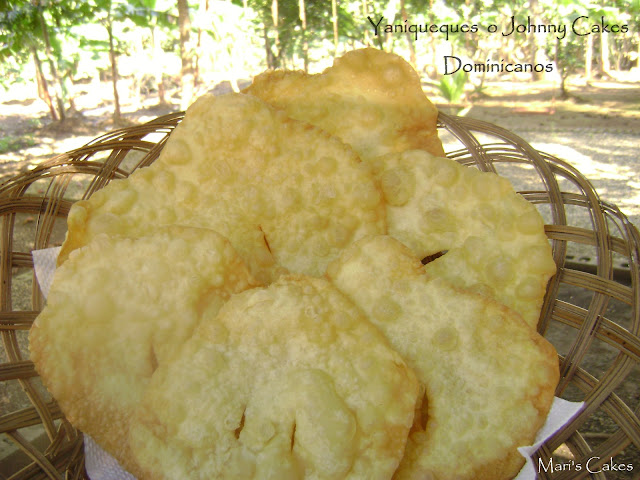The Johnny Cake, known as Yaniqueque in the Dominican Republic, is a variation of the North American Johnny Cake. While the original recipe is made with cornmeal, there are versions that combine cornmeal and wheat flour, as well as others that use only wheat flour. Some variations include additional ingredients such as shredded coconut, coconut milk, egg, honey, sugar, and salt, among others. The preparation method can be either baked or fried.
In the Dominican Republic, Yaniqueque was introduced by English-speaking Caribbeans or African descendants, who adopted it as one of their favorite dishes due to its simple preparation and low cost. The Dominican version is made by mixing wheat flour with butter, oil, and a touch of salt. Although it is generally fried, it is sometimes baked. Discover more about this delicious variant of the Johnny Cake and savor its unique flavor.
This recipe is a favorite among Dominicans and has become a craving for those living outside the country who have tried it during their vacations. Personally, it brings back memories of my trips to the Dominican Republic, especially visits to Boca Chica beach, where you can find Yaniqueques and fried fish. Although they are now sold at many roadside stalls, I insist that there is no comparison to the ones we make at home.
The recipe I share is the same one I use for empanadas and pastelitos, but it is halved as it yields enough for Johnny Cakes. Note that for pastelitos, I don't use baking powder. I hope you enjoy my version at home, bringing a piece of the authentic Dominican experience. Happy cooking!
Dominican Johnny Cakes, Yaniqueques
Ingredients:
2 cups flour (260 g)
1 tablespoon sugar
¼ teaspoon salt
1 teaspoon baking powder
¼ cup margarine (56 g)
1 egg
½ tablespoon cooking wine (8 ml)
¼ cup + 1 tbsp water (74 ml)
Oil for frying
Instructions:
1. In a bowl, mix together the flour, salt, sugar, and baking powder. Make a hole in the center of the dry ingredients.
2. Add the margarine, egg, and cooking wine to the center of the dry ingredients. Mix everything together with your hands until well blended.
3. Gradually add the water to the mixture, a little at a time, until a soft dough forms. You may not need to use all of the water. Knead the dough lightly and let it stand for at least half an hour.
4. Divide the dough into small balls, each about 1 ½ inches wide. Roll out each ball with a rolling pin on a floured surface or between sheets of waxed paper until a thin disk is formed. Use a knife to make two slits in the middle of each disk to prevent the dough from inflating while cooking.
5. Fry the disks in hot oil, turning once, until both sides are golden brown. Drain the fried disks on paper towels. If desired, sprinkle with salt, but it is not necessary.
Notes:
a) The thinner you roll out the dough, the crispier it will be. If you leave it a bit thicker, it will be soft on the inside and toasted on the outside.
b) It can be served with ketchup.
c) My favorite way to eat it is giving it an American twist, sprinkling it with powdered sugar and cinnamon – they taste delicious! This way, it reminds me of the "Fry Dough" at Canobie Lake Park in New Hampshire, although I clarify that Dominicans don't eat it this way.
If you enjoyed this recipe, you'll love:
Again, truly I tell you that if two of you on earth agree about anything they ask for, it will be done for them by my Father in heaven. - Matthew 18:19
















.jpg)



.JPG)
.JPG)
.JPG)
.JPG)
.JPG)


.jpg)

Keep in touch